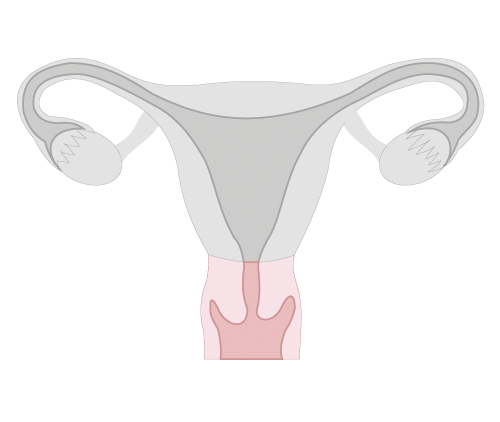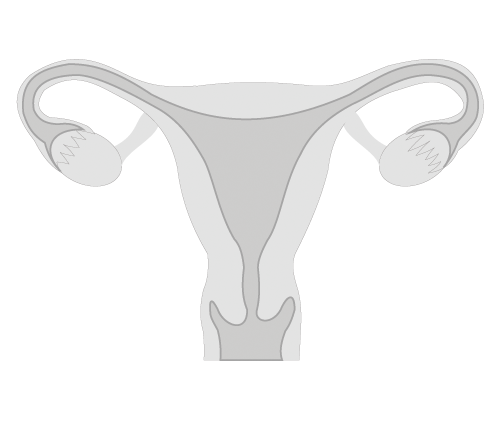The main types of hysterectomy include:
- Complete or total – this involves removal of the whole uterus as well as the cervix.
- Partial or subtotal – this involves removal of the body of the uterus but leaves the cervix in place.
- Radical – this involves removal of the uterus, the cervix, the upper part of the vagina, and the tissue surrounding the cervix. This is done for some gynaecological cancers.
Depending on the case, one or both ovaries and fallopian tubes may also be removed at the time of hysterectomy.
After a hysterectomy, you will not have periods and you will not get pregnant. If both ovaries have been removed as well, you will become menopausal and you may start experiencing menopausal symptoms such as hot flushes if you were not already menopausal prior to the hysterectomy.
- Normal
- Total Hysterectomy
- Total Hysterectomy (with ovaries and fallopian tubes)
- Radical Hysterectomy
How is a hysterectomy performed?
A hysterectomy can be performed in a few different ways:
- Abdominal hysterectomy – this is done through a cut in the abdomen.
- Vaginal hysterectomy – this is done through the vagina. There are no visible cuts.
- Laparoscopic hysterectomy – this is done using a laparoscope (key-hole surgery) via 3-4 very small cuts in the abdomen.
The type of surgery performed depends on the reason for the surgery and the medical history. Your gynaecologist will discuss with you the most suitable surgery for your condition.
What are the reasons for hysterectomy?
Reasons for hysterectomy include:
- Fibroids – these are benign tumours of the muscle of the uterus. They can cause heavy bleeding or pain in some women
- Heavy or irregular periods – hysterectomy may be an option where other non-surgical methods have failed
- Endometriosis – this is a condition where the tissue lining the inside of your uterus grows outside the uterus on your ovaries and other pelvic or abdominal organs. Endometriosis can cause period pain, chronic pain or pain during sex. A hysterectomy may be required when more conservative treatment like medication and other surgery have failed
- Uterine prolapse – this occurs when the uterus moves from its usual place down into the vagina. This can cause feelings of pressure and discomfort, urinary problems, or a lump protruding from the vagina. Surgical treatment for prolapse may include a vaginal hysterectomy
- Cancer – this includes cancer of the uterus, cervix or ovary
- Chronic pelvic pain – a hysterectomy will help if the pain is clearly coming from the uterus. However, many cases of chronic pelvic pain are not cured by a hysterectomy and one has to think carefully before proceeding with a hysterectomy if the cause of the pain is uncertain





